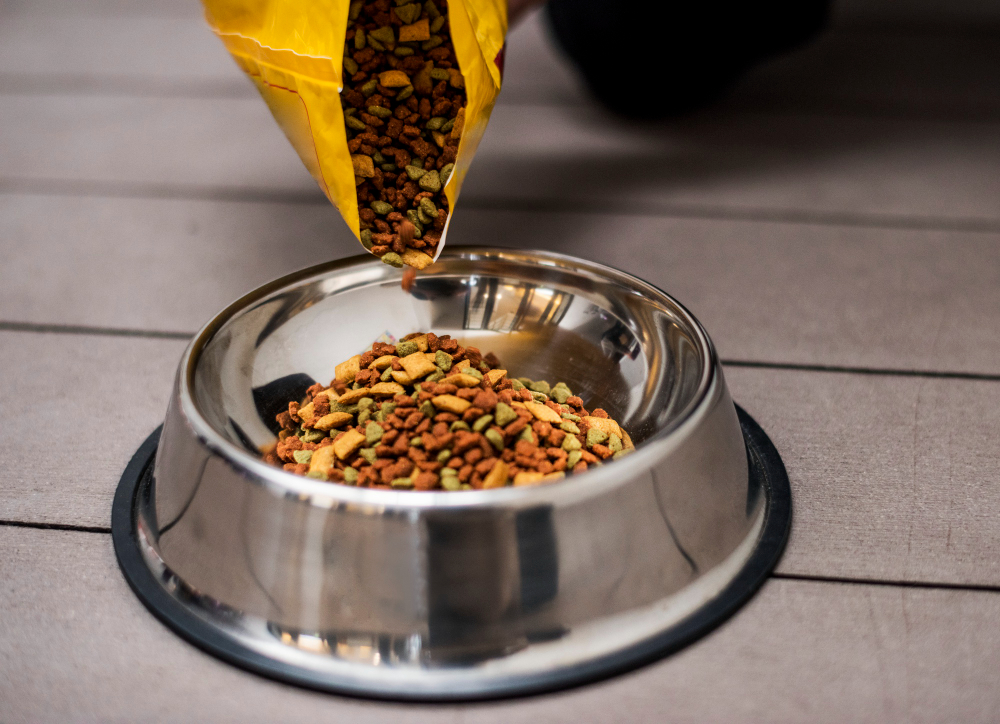Discovering an army of ants parading through your dog’s food can be both perplexing and alarming. As dog owners, the primary concern that comes to mind is: “my dog ate ants, what do I do?” Your canine companion’s well-being is of utmost importance, making this issue more than just a minor inconvenience. In this article, we’ll delve into the facts, exploring whether ants can pose harm to dogs, why they are attracted to your pet’s food, and crucially, how to get ants out of dog food.
Ants and Dogs: What happens if ants get in my dog’s food?
If your dog has eaten food swarming with ants, it’s natural to panic. In most cases, ants are merely a nuisance rather than a health hazard. However, there are some types of ants that can pose problems. For instance, fire ants, known for their painful bites, can potentially hurt your pet’s mouth or digestive tract. This leads us to the alarming question, “can ants kill a dog?” In extreme cases, if your pet is allergic to ant bites, there can be serious health implications. However, such instances are relatively rare.
Can I feed my dog food that has ants in it?
It’s not ideal to feed your dog food that’s overrun by ants. While ants aren’t typically toxic, some dogs can have allergic reactions to them. Plus, ants can carry bacteria, increasing the risk of your dog getting sick. In summary, it’s always best to discard ant-infested food to ensure the safety of your pet.
The Ant and Dog Food Connection: Why are ants attracted to dog food?
Now, you may be wondering, “why are ants attracted to dog food?” Well, dog food is often rich in proteins, fats, and sugars – the very ingredients that attract ants. The smell and consistency of wet dog food, in particular, can be a real ant magnet. Therefore, it’s crucial to store dog food correctly, keeping it out of reach of these tiny invaders.
Preventing an Ant Invasion: How do I keep ants out of my dog food?
Getting rid of ants from your pet’s food may seem a Herculean task. However, with a clear understanding of the problem and practical solutions at hand, it is manageable. Here’s how to get ants out of dog food and, more importantly, prevent them from making a comeback.
- Follow a feeding routine: Having pre-established feeding times for your dog can limit the exposure of dog food, thus reducing the chance of ant invasion. Leaving food out indefinitely not only attracts insects but also causes the food to deteriorate and become rancid. Make it a point to remove any uneaten food promptly after your dog has finished eating.
- Maintain cleanliness: Keeping your pet’s eating area and the storage area for dog food clean and free from food particles is crucial. Ants are attracted to the smallest crumbs, so regular cleaning can keep them at bay.
- Proper storage: Store dog food in airtight containers. This method not only keeps the aroma contained, reducing the likelihood of attracting ants but also keeps the food fresh for a longer time.
- Use ant deterrents: Consider using ant deterrents around your dog’s food area. Opt for pet-safe options available in the market that can repel ants without causing harm to your pet.
- Invest in ant-proof feeders: If you’re dealing with a persistent ant problem, it might be worth investing in an ant-proof dog feeder. These feeders are designed in a way that makes it nearly impossible for ants to access the food, thus ensuring your dog’s meals stay ant-free.
- Manage ants in the dog food bowl: If you find ants in the dog food bowl, clean it thoroughly and relocate it. Creating a ‘moat’ by placing the bowl in a shallow dish of water can also serve as an effective barrier against ants.
Implementing these strategies can help you manage and prevent an ant invasion effectively, thereby ensuring the well-being of your canine companion.
Conclusion
Managing ants in dog food might seem like a daunting task, but with the right information and techniques, it is manageable. Ensuring your dog’s health and safety involves vigilance and regular maintenance of their eating and storage areas. By being proactive, you can put an end to the relentless march of ants toward your pet’s meal, ultimately securing peace of mind as a responsible pet owner.

